Sunday E-dition: Capturing Light — The Quiet Art of John Paul Marcelo
By Tim Carl
Support Napa Valley Features – Become a Paid Subscriber Today
If you’re reading this, you care about independent, locally owned, ad-free journalism — reporting that puts our region’s stories first, not corporate interests or clickbait.
As local newsrooms are increasingly bought by billionaires, scaled back or absorbed into media conglomerates, communities lose original reporting and are left with more syndicated content. Your support keeps quality regional journalism alive.
Join a community that values in-depth, independent reporting. Become a paid subscriber today — and if you already are, thank you. Help us grow by liking, commenting and sharing our work.
Capturing Light: The Quiet Art of John Paul Marcelo
By Tim Carl
NAPA VALLEY, Calif. — Drive along a backroad in Napa Valley before the day heats up and you might see him — standing quietly, brush in hand, facing the landscape as if in conversation with the shifting light. Or perhaps you’ll catch a glimpse of him along Highway 1, anywhere between San Francisco and Mendocino, setting up his easel at the edge of a cliff or beside a weathered barn. His movements are deliberate but unhurried, a quiet urgency guiding each stroke. His name is John Paul Marcelo, a plein air painter capturing the fleeting beauty of the world around him.
Marcelo, now based in Santa Rosa, grew up in Chicago, where he first began to draw.
"I always liked to draw, but it wasn’t until college that I started painting seriously," he said.
He attended Columbia College in Chicago, initially considering a career in graphic design, but found himself drawn to the immediacy and physicality of painting.
"I was studying color composition and one of my favorite exercises was trying to mix primary colors to match a specific shade,” he said. “It taught me how to see color in a new way. How to really see."
Marcelo’s work is rooted in a tradition that dates back centuries with ties to the Impressionists and the California plein air painters of the early 20th century. The term "plein air" comes from the French "en plein air," meaning "in the open air."
"People have memories of places. They’ll see me painting and tell me their stories. Sometimes it’s joyful, sometimes it’s painful. That’s the power of art — it brings back moments, even ones we weren’t expecting." - John Paul Marcelo
It is a practice that demands discipline, as the light and landscape shift constantly. Artists must work quickly, committing to decisions in real-time.
"For me, painting is about imprinting our environment onto canvas," Marcelo said. "Capturing the light, the mood, the feeling of a place in that exact moment."
His work is informed by the California Impressionists — painters like Edgar Payne and Guy Rose — but it also carries echoes of older European traditions.
"Monet’s later work, when he was losing his eyesight, was rougher, more textured,” he said. “I think about that a lot. Artists change over time. Vision changes. The way we see the world evolves."
For over 20 years Marcelo has painted nearly every day, often beginning early in the morning when the light is soft, and shadows are long.
"Midday is my break time," he said. "The light’s too harsh. I eat lunch and listen to music — recently Vince Guaraldi, the jazz pianist best known for the Peanuts soundtrack — and then I head out again in the afternoon when the light is better."
For Marcelo, painting is a quiet act of observation, but it is also a form of storytelling. He sees his work as a kind of documentary, a way of marking time in a rapidly changing world.
"People think of Impressionism as just beautiful landscapes," he said. "But the early French painters were also documenting their environment — the changing infrastructure, railroads and pollution. The Ashcan School in New York did the same, capturing the grittier urban landscapes of the early 20th century. In a way that’s what I’m doing too."
His recent work in Napa Valley captures the seasonal shifts — fall foliage that he describes as fleeting, spring wildflowers that offer a new palette of colors.
"I was painting the fall colors in Napa when someone said, ‘Come back in spring when the flowers are incredible.’ So that’s what I’m doing. It’s another time to return before it gets too hot."
His connection to place extends beyond the landscape.
"People have memories of places," he said. "They’ll see me painting and tell me their stories. Sometimes it’s joyful, sometimes it’s painful. That’s the power of art — it brings back moments, even ones we weren’t expecting."
Despite his talent, Marcelo’s approach to art is refreshingly unpretentious. He largely avoids social media and maintains only a minimal online presence. He previously had gallery spaces in Oakland and Sebastopol, but for now, his work is shown only at Studio 391 in Gualala.
"I sell most of my work just by being out in the world," he said. "People see me painting, they stop, they ask. That’s how it happens."
He also avoids working from photographs.
"For me it’s about being there in the moment. I don’t want to paint from a memory of a photograph — I want to paint the experience. If I need to go back to a spot I will. The light changes so fast and I want to capture that change."
The back of Marcelo’s car serves as a mobile studio, a space where he organizes his supplies and listens to records as he paints. A portable turntable spins vinyl while he works, filling the air with the sounds of jazz or classical compositions. Nearby, several of his recent paintings rest, capturing railroad scenes, landscapes and sunlit storefronts. The music, the movement, the art — all blend into his immersive creative process, grounding him in the moment.

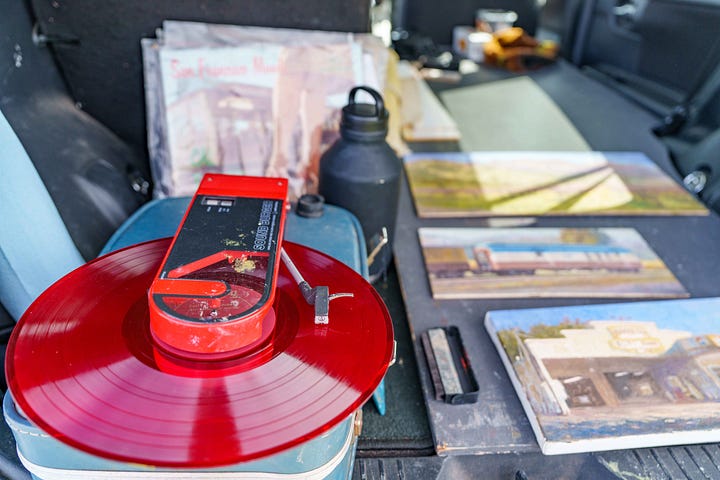
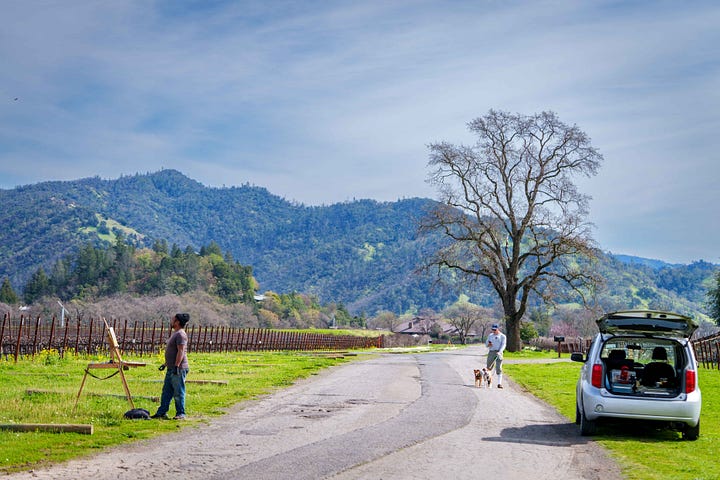
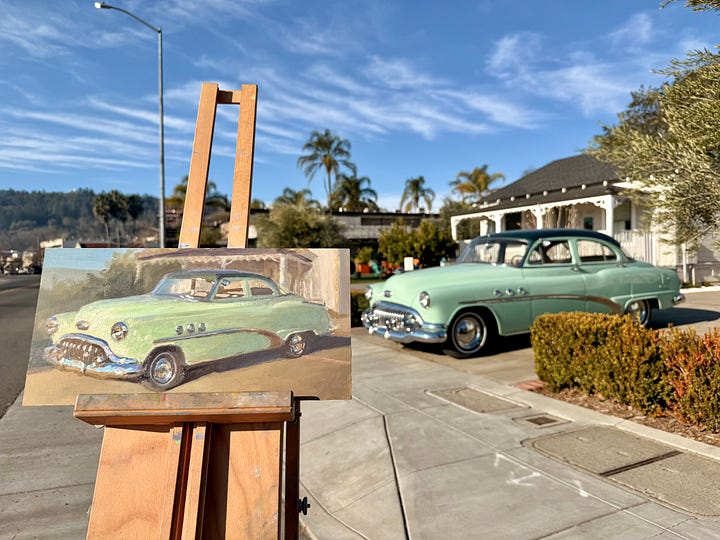
For now, Marcelo’s world includes the hills and vineyards of Napa Valley — at least when the temperatures stay below 73 degrees.
"If it gets too hot, I’m at the coast," he said. "That’s why I moved to California — to be near the ocean."
The cooler temperatures, he explains, allow him to paint comfortably for longer periods without the colors drying too fast or the light shifting too harshly.
His paintings are not just records of a place, but of a moment — a specific light, a fleeting shadow, the shifting glow of the sky at dawn. They are reminders that beauty is often quiet, that art doesn’t need to shout to be heard.
"This is our time in history," he said. "And I’m just here to document it."
See some of his work, here.
John Paul’s paintings are typically oil on wood panels, which he personally prepares. His work ranges in size from 12x9 inches (starting at $450) to 2x1 feet (starting at $900). Larger custom pieces, including commissioned works up to 4x2 feet, start around $4,000. Prices vary based on factors like time, location and specific details of each piece.
—
Tim Carl is a Napa Valley-based photojournalist.
Today’s Polls
Explore These Related Articles:
Browse All Napa Valley Features Stories
Poems of the Day
"I Live My Life in Widening Circles"
By Rainer Maria Rilke
I live my life in widening circles that reach out across the world. I may not complete this last one but I will give myself to it. I circle around God, around the primordial tower. I’ve been circling for thousands of years and I still don’t know: am I a falcon, a storm, or a great song? — from "The Book of Hours"
About the Author: Rainer Maria Rilke (1875–1926) was a poet of movement and transformation, known for his meditative verse and lyrical introspection. Born in Prague, he spent much of his life wandering through Europe, drawn to art, philosophy and the mysteries of human existence. His poetry, deeply influenced by his travels and encounters with great thinkers of his time, explores themes of solitude, devotion and the search for meaning.
In "The Book of Hours," Rilke speaks to a restless longing, circling the divine in an ever-expanding orbit, embracing uncertainty with reverence. His words remind us that even without clear answers, the act of seeking—of giving ourselves fully to the journey—carries its own profound significance.
Are you a poet, or do you have a favorite piece of verse you'd like to share? Napa Valley Features invites you to submit your poems for consideration in this series. Email your submissions to napavalleyfeatures@gmail.com with the subject line: "Poem of the Day Submission." Selected poets will receive a one-year paid subscription to Napa Valley Features (a $60 value). We can’t wait to hear from you.
Caption Contest
Pick your favorite caption or add your own in the comments below.
Possible Captions:
"The sign said ‘Straight Ahead?”
"Do I navigate this, or just embrace it?"
"I am here. And here. And here. And still here."
"This better be worth the metaphor."
"Lost? Or exactly where I need to be?"
Last week’s contest results
In “Sunday E-dition: Roots and Resilience — A Family’s Scottish Past,” the winning caption was, "Good news — I’m royalty. Bad news — the country no longer exists,” with 43% of the votes.
"That explains my love of bagpipes."
"I knew I was adopted."
"My ancestors really got around."
“Good news — I’m royalty. Bad news — the country no longer exists.”
“Well, that explains my fear of commitment.”
Last Week
Glenda Winders reflected on her heritage in "Roots and Resilience — A Family’s Scottish Past," tracing her lineage back to Lady Margaret Dewey, an 18th-century Scottish noblewoman who fled an arranged marriage for a new life in America. Winders recounted her great-grandfather’s pride in their Scottish roots and how his storytelling kept the family history alive. She also acknowledged her German ancestry and the limited knowledge she had of that side of the family. Through personal anecdotes, she explored the universal immigrant experience, recognizing the courage it took for ancestors to seek a new beginning.
Tim Carl analyzed the results of the 2025 Premiere Napa Valley auction in "PNV 2025: Rising Revenue Masks a Continued Market Contraction," highlighting a 10% revenue increase from 2024 but a continued decline in per-lot prices. Despite strong participation and enthusiasm for the 2023 vintage, average per-lot prices fell 36.2% from the 2015 peak, reflecting broader market pressures. Buyers remained cautious, aligning with trends in the grape market and direct-to-consumer wine sales. While high-end buyers continued to engage, overall demand showed signs of strain, prompting wineries to invest more in relationship-building and sales strategies.
Charlotte Hajer, alongside therapists Elizabeth Celaya and Lisa Davison, explored the role of emotional wellness in relationships in "Emotional Wellness: The Heartbeat of Healthy Relationships." They emphasized the importance of self-awareness, personal responsibility and mutual support in fostering healthy connections. The authors debunked the notion that relationships alone can "fix" emotional struggles, instead advocating for individual well-being as the foundation for meaningful partnerships. They also highlighted how emotional resilience enables partners to navigate challenges together while maintaining personal growth and autonomy.
Bob Niklewicz and Margaret Green detailed the seasonal care of roses in "How to Prepare Your Roses for a Spectacular Bloom," focusing on the Fuller Park Rose Garden in Napa. They explained the importance of winter pruning, proper fertilization and early spring maintenance to ensure vibrant blooms in May and June. The authors emphasized soil health, pest management and irrigation checks as key factors in successful rose gardening. They also invited the public to join Napa County Master Gardeners for hands-on workshops and discussions about rose care.
Tim Carl reported on the opening of Mentis’ new $4 million mental health facility in "Mentis Opens New Mental Health Facility to Serve Napa’s Growing Needs," highlighting its expanded services and commitment to community-based care. The nonprofit, which has operated since 1948, doubled its therapy spaces and introduced specialized areas for peer support, prevention programs and creative wellness activities. Despite increased demand, uncertainty looms over future funding due to federal and state policy changes. Mentis leaders emphasized their dedication to adapting and sustaining accessible mental health services for Napa residents of all ages.
Kathleen Scavone explored the diversity of ferns in Napa County in "Fascinating Ferns of Napa County," highlighting the variety of species that thrive in the region’s unique ecosystems. She shared insights into the ecological roles ferns play and their adaptations to local conditions. Through her discussion, she encouraged readers to take a closer look at these often-overlooked plants and appreciate their resilience.



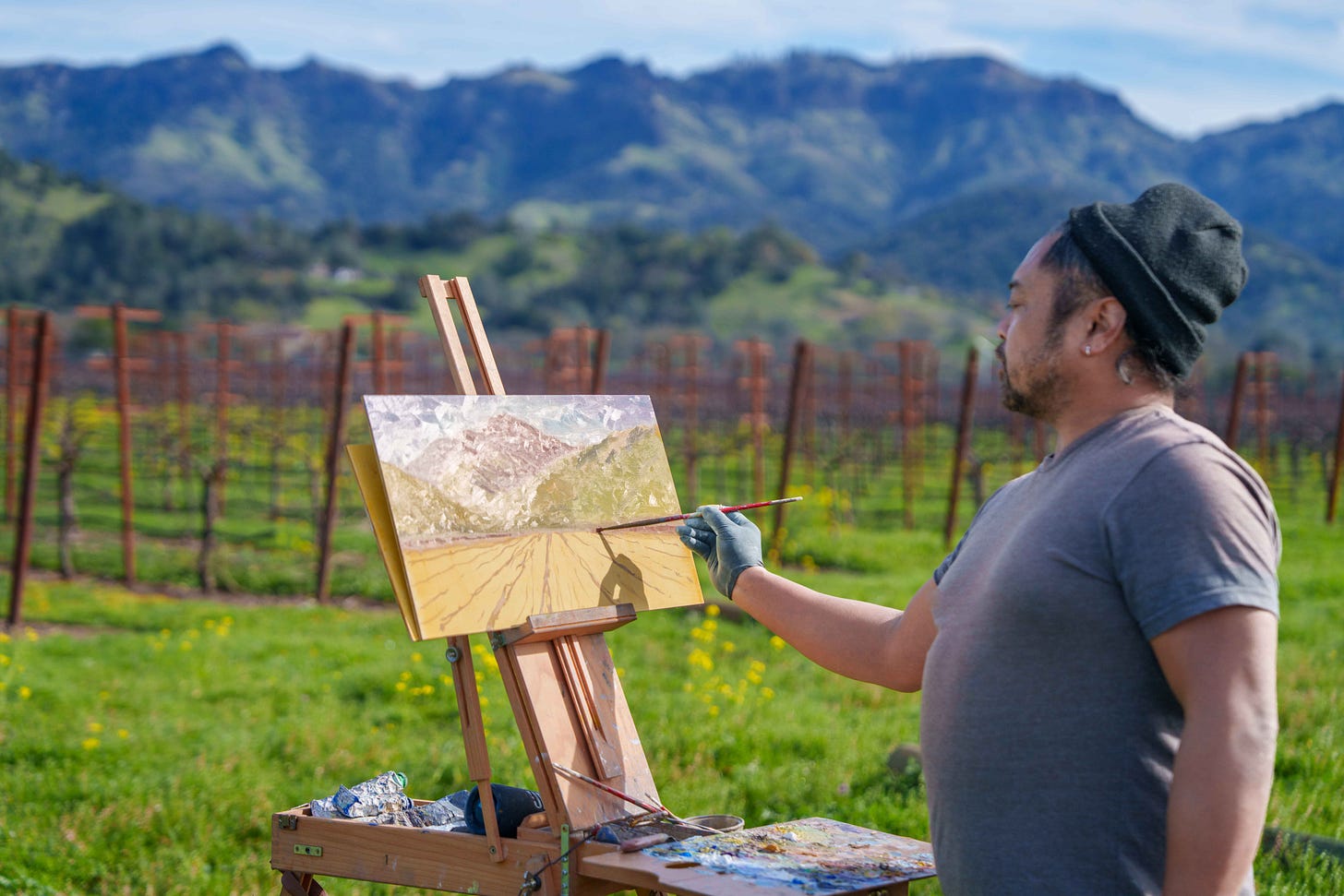
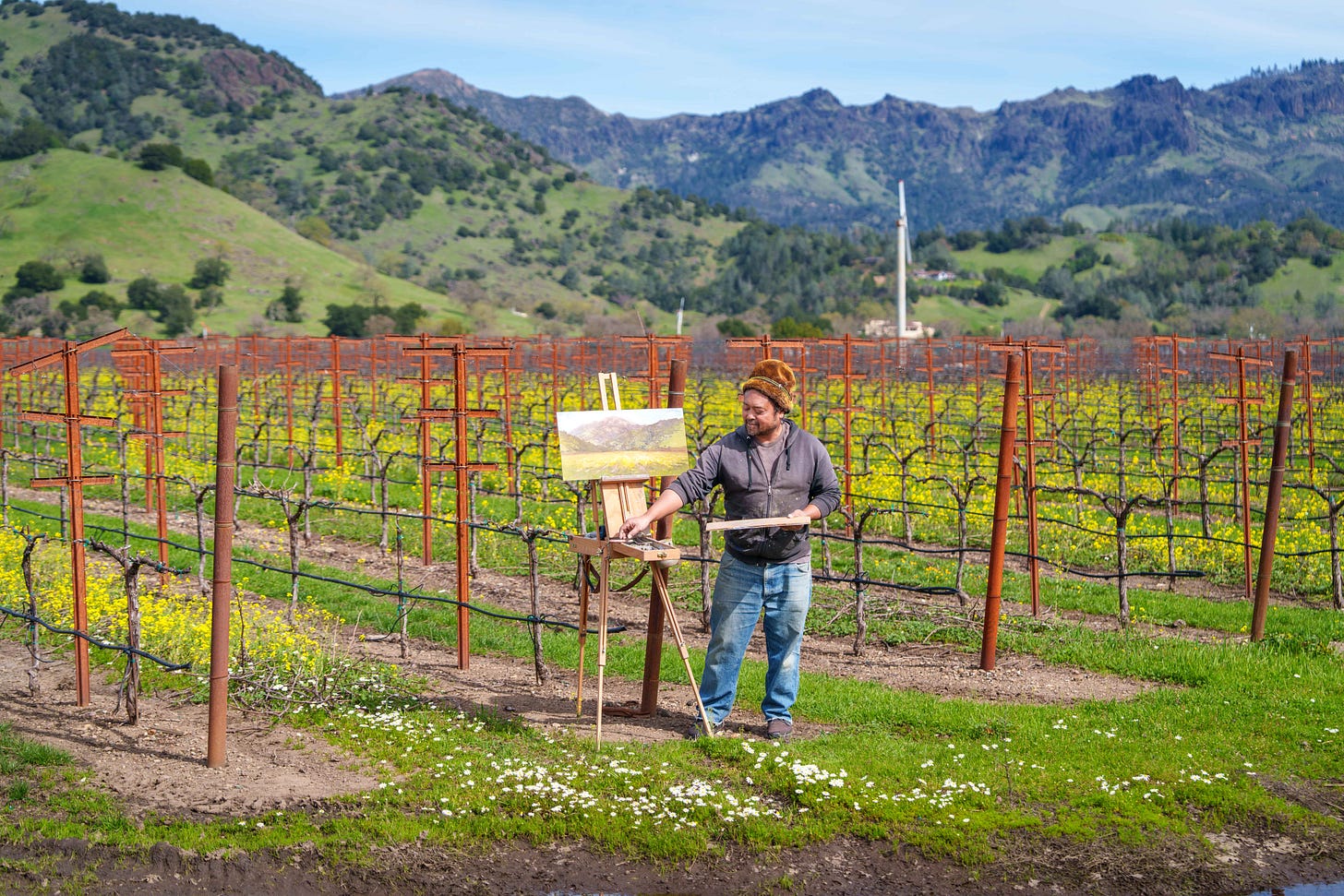
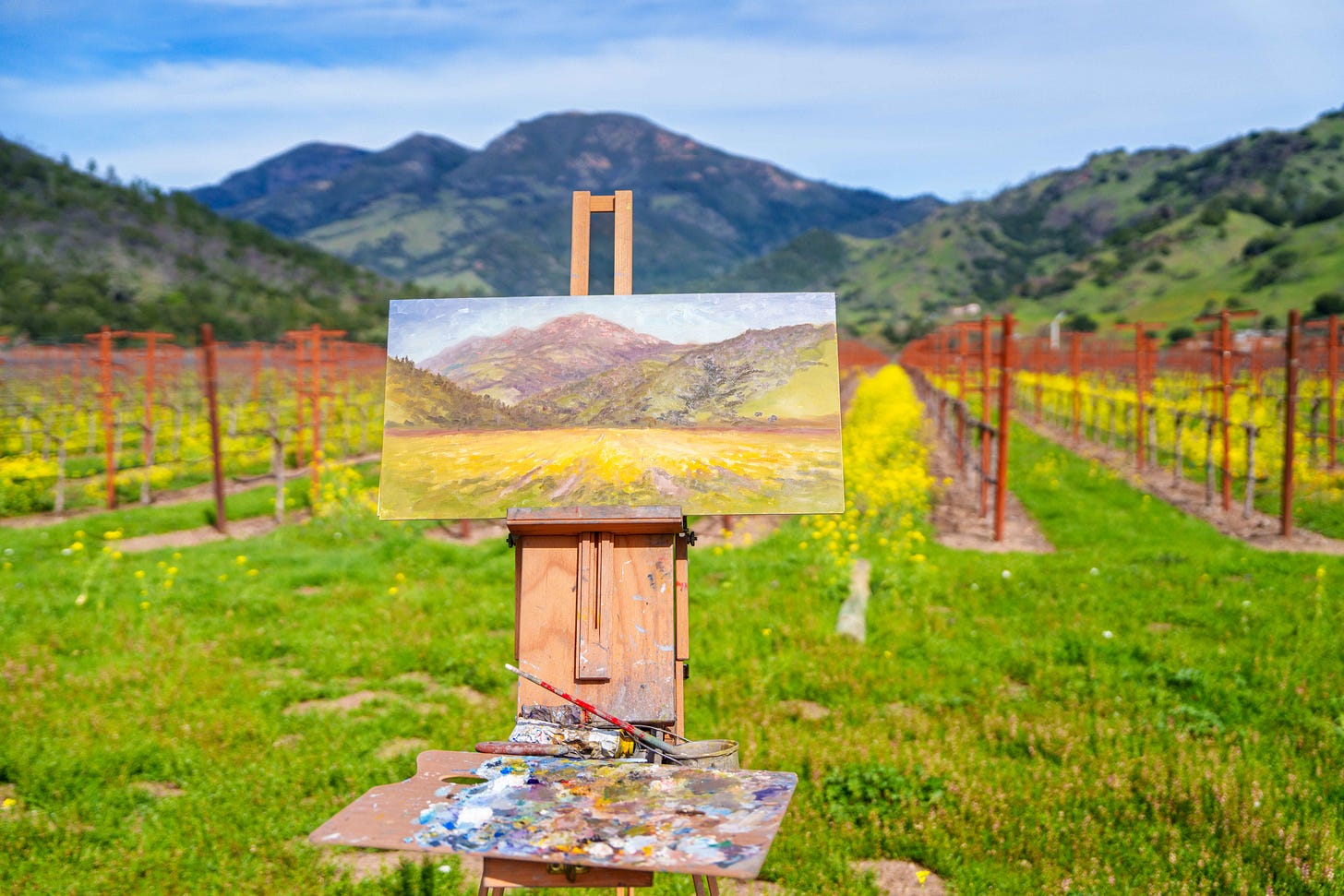



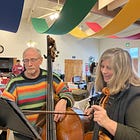
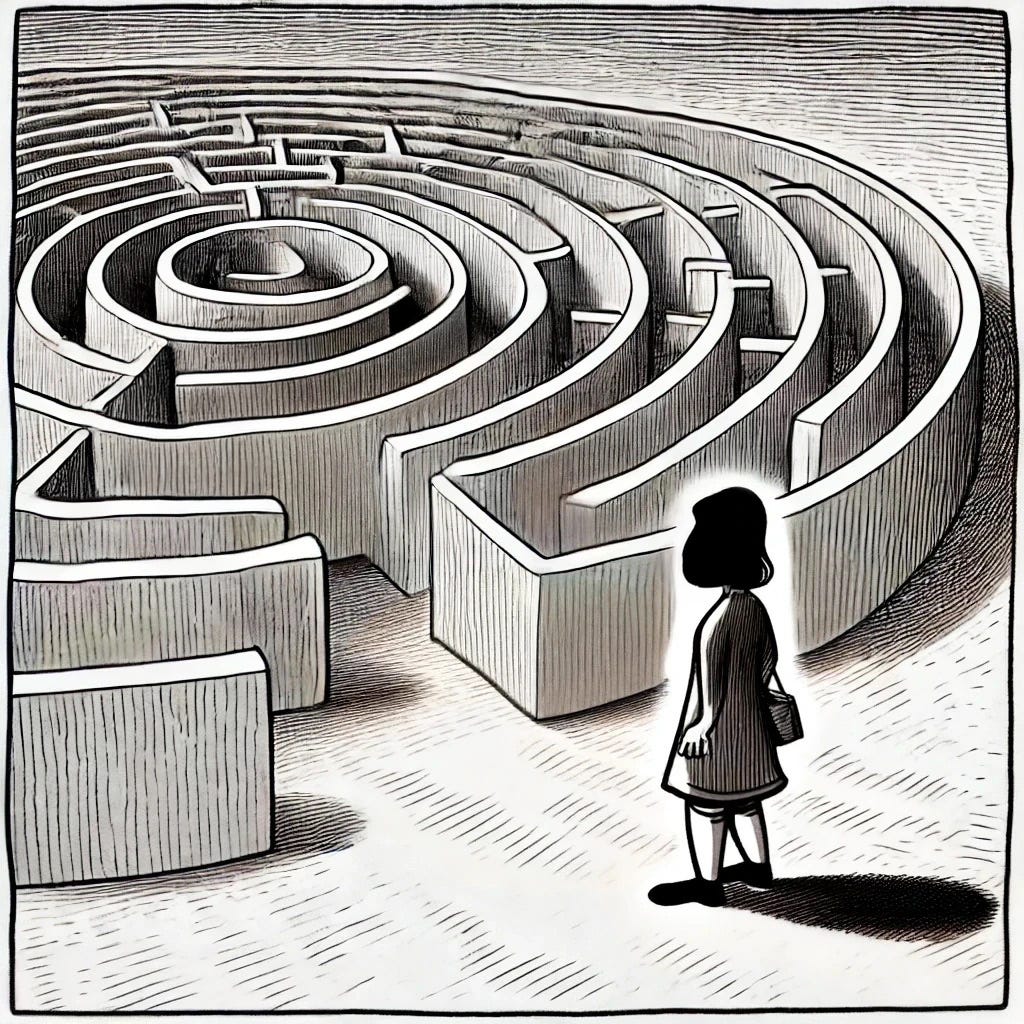



Soul searching.
I appreciated this article - both story and photographs